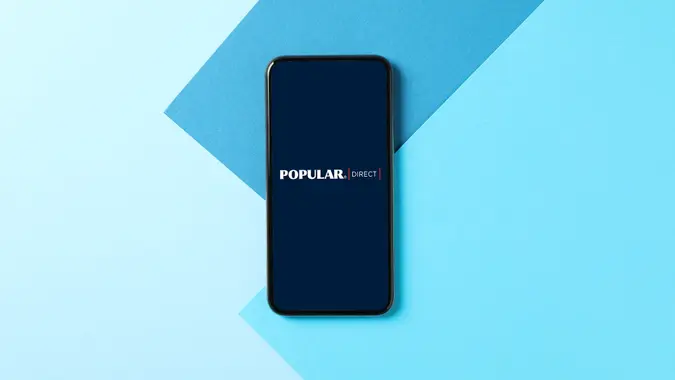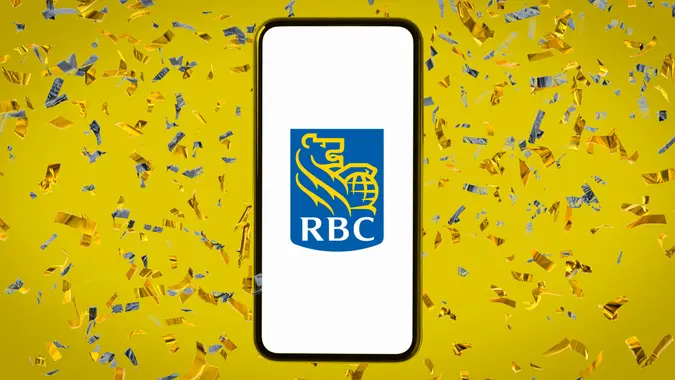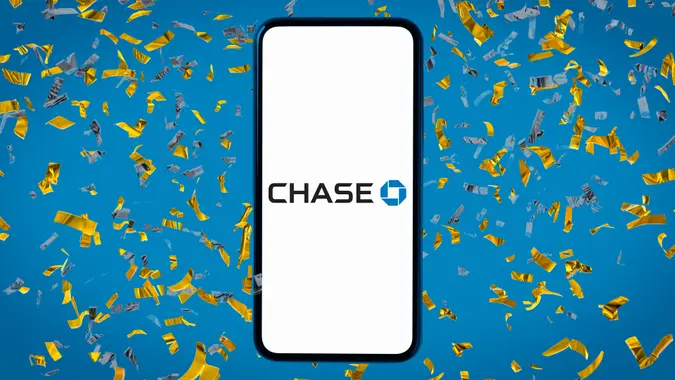How To Transfer Money From One Bank to Another

Commitment to Our Readers
GOBankingRates' editorial team is committed to bringing you unbiased reviews and information. We use data-driven methodologies to evaluate financial products and services - our reviews and ratings are not influenced by advertisers. You can read more about our editorial guidelines and our products and services review methodology.

20 Years
Helping You Live Richer

Reviewed
by Experts

Trusted by
Millions of Readers
Transferring money between banks is easier than ever, thanks to the rise of online and mobile banking. Whether you’re moving funds between your own accounts or sending money to someone else, you have several transfer methods to choose from. Here’s a quick breakdown of the most common ways to transfer money between banks:
| Method | Speed | Transfer Fee | Best For |
|---|---|---|---|
| Automated Clearing House (ACH) | Up to 3 days | Free | Regular transfers |
| Internal electric transfer | Typically instant | Free | Accounts you own |
| Peer-to-peer (P2P) transfer | Up to 3 days | Free or up to $25 for instant transfers | Easy setup |
| Wire transfer | 1 to 3 days | $15 to $50 | International transfers |
ACH Transfers
The ACH network connects most major U.S. banks and credit unions, allowing the transfer of funds between accounts.
To initiate the transfer, contact the sending bank, and the receiving bank will have the funds within three business days.
You can use bank-to-bank transfers to send money between two accounts you own or to send money to another person’s account. But you need to make a wire transfer or use a third-party service to send money internationally.
Internal Electronic Transfers
Internal electronic transfers are often the best option if you own both bank accounts, even if they’re at different banks or financial institutions.
You can usually complete the transfer through your bank’s website or the banking app by linking the accounts using the routing and account numbers.
For many banks, transfers between external connected accounts are free, but this is not the case for all banks. You need to confirm the policies with the banks involved.
P2P Transfers
Several P2P payment tools are available online, including PayPal, Venmo, Zelle and Cash App. You’ll need to link your savings account or checking account to the app using your routing and account numbers.
When using PayPal, for instance, the funds you send are automatically deducted from your bank account. PayPal then sends this money to the recipient’s PayPal account. From there, the recipient can choose to spend the money via PayPal or transfer it to their bank account or debit card.
Wire Transfers
A wire transfer is a quick method that allows money to move without a physical exchange of cash. Here are some examples of when a wire transfer makes sense.
- You need to send money internationally.
- You need to exchange foreign currency during the transfer.
- You are sending a large amount of money.
- You want added security and protection.
- Your recipient doesn’t have a peer-to-peer payment account.
With wire transfers, the sender pays for the transaction at their bank. The person sending the money also needs to provide the recipient’s account details, including personal information, banking information and the reason for the transfer.
What are the Limits on How Much You Can Transfer Between Banks?
Transfer limits vary by bank, but most financial institutions cap how much you can move in a single transaction or over a set period. These limits typically range from $3,000 to $15,000, depending on your account type, your relationship with the lender and the transfer method.
Peer-to-peer payment platforms like Venmo and PayPal also have transfer limits. For example, Venmo has a limit of $5,000 per individual transfer or $19,999.99 per week.
How To Transfer Money Between Banks: Step-by-Step
If you want to make a bank transfer, follow the steps below:
- Log in to your bank account: Start a one-time or recurring bank transfer through the bank’s website or mobile app.
- Select transfer funds: Choose the option to transfer money.
- Enter the routing number and account number: These should be the bank routing and account numbers for the person receiving the money.
- Confirm the transfer: After entering the details, you can confirm the transfer. Your bank may require you to verify your identity through text verification or a phone call.
- Wait 1 to 2 days: The transfer may take some time, unless it’s a same-day option.
How Long Do Bank Transfers Take?
The time it takes to complete a bank transfer depends on the method used. Here’s what you can expect.
| Method | Speed |
|---|---|
| ACH | Up to 3 days |
| Internal electric transfer | Typically instant |
| P2P transfer | Up to 3 days |
| Wire transfer | 1 to 3 days |
Tips To Avoid Transfer Delays and Fees
Don’t let a simple mistake or scam cost you. Use these smart tips to keep your money moving safely.
Double-Check Payment Information
Providing incorrect information for a money transfer may keep the money from reaching the recipient. Be sure to double-check the name, phone number and email before hitting send. In some money transfer apps, you may not be able to recover this money once it’s sent.
Confirm the Recipient
Before sending money, verify the recipient’s identity through a trusted method — especially if you were contacted unexpectedly. Scammers often pose as customer service representatives, government workers or family members. Always pause and confirm before transferring funds.
Alternatives If You Don’t Want To Link Banks
You can still move money if you don’t want to link bank accounts or don’t have an account. It may involve a small fee or require some extra effort, but you can make it happen.
Here’s a look at some alternatives:
- Money order
- Paper check
- Cash
- Gift card
- Cashier’s checks
Final Take: What To Know Before Moving Your Money
Transferring money from one bank to another is easier than ever — but choosing the right method matters. Whether you’re splitting rent with a friend, sending money abroad or setting recurring transfers between your own accounts, there’s an option that fits your needs. Just remember to double-check your details, keep an eye on fees and use secure digital banking platforms. With a little planning, you can transfer your money quickly, safely and without surprises.
FAQs About Transferring Money Between Banks
At some point, you'll need to know how to transfer money from one bank account to another. The answers to these questions can make the process easier.- How do I transfer money from one bank to another without fees?
- One of the easiest ways to transfer money from one bank to another without fees is to use a transfer service like Zelle or a peer-to-peer payment app like Venmo. The services vary, depending on the provider, but both allow you to transfer money for free.
- What is the easiest way to transfer money from one bank to another?
- Zelle is one of the easiest ways to transfer money from one bank to another when you're making the transfer to someone else's account. Many banks and credit unions integrate the service into online bank accounts. You can also use apps like Venmo or PayPal.
- How do I transfer money from one bank account to another?
- You can transfer money from one bank account to another with an ACH transfer, internal electronic transfer, peer-to-peer transfer or wire transfer.
- Can I use Zelle to transfer money between banks?
- You can use Zelle to transfer money between banks. It's a free service that many banks and credit unions offer to customers. All you need is the recipient's phone number or email address.
- What is the safest way to transfer large amounts of money?
- A wire transfer is often the safest method for transferring large amounts of money. It includes enhanced security features, and the money goes directly from one account to the other. You can use a wire transfer to send money within the United States or abroad.
Sarah Sharkey, Cynthia Measom, Chris Ozarowski and Elizabeth Constantineau contributed to the reporting for this article.
Our in-house research team and on-site financial experts work together to create content that’s accurate, impartial, and up to date. We fact-check every single statistic, quote and fact using trusted primary resources to make sure the information we provide is correct. You can learn more about GOBankingRates’ processes and standards in our editorial policy.
- Mint. "How to Transfer Money Between Accounts at Different Banks."
- Better Money Habits - Bank of America. "4 Ways to Send Money Online to Friends and Family."
- CNBC. "Best Money Transfer and Payment Apps of November 2021."
- MyBankTracker. "Wire Transfer Fees: US and International Rate Comparison."
- Better Money Habits - Bank of America. "How Do Bank Deposits Work? When Are Funds Available?"
- Forbes. "Funds Availability And Your Bank Account: What You Need To Know."
- Chase. "How to wire money."
- Western Union. "Wire transfer vs bank transfer: What’s the difference."
- Consumer Rescue. "What can you do if you sent money to a stranger by mistake?"
 Written by
Written by  Edited by
Edited by 

























